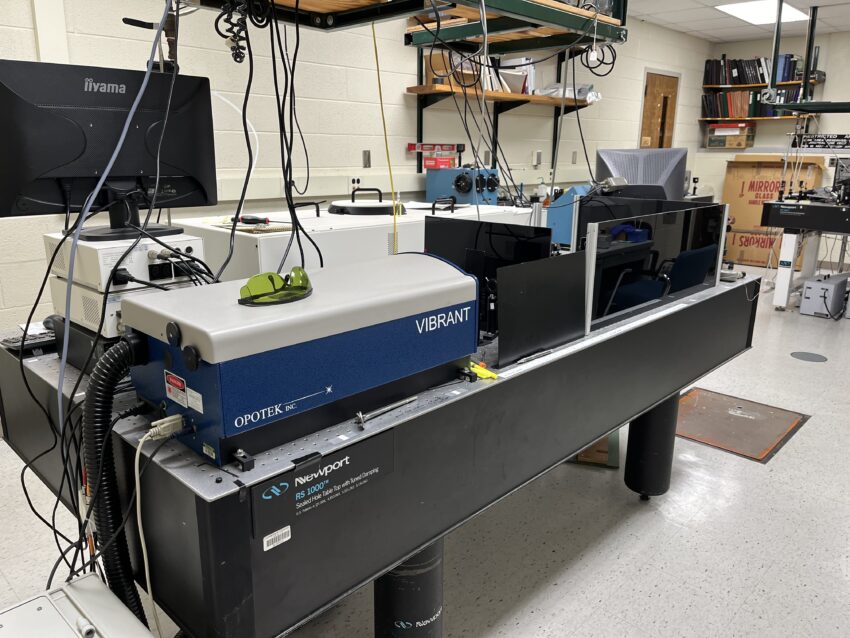Optical parametric oscillators are key to cutting-edge nanosecond time-resolved spectroscopy research
In physical chemistry, time-resolved spectroscopy is the study of dynamic processes in materials or chemical compounds. Within this field, various techniques including transient absorption spectroscopy are used to study the mechanistic and kinetic details of chemical processes that occur within just a few picoseconds to a femtosecond.
To conduct this research, labs require fast lasers that can create an excited electronic state of a molecule on this time scale. Since all molecules do not absorb the same wavelengths of light, these lasers must be flexible enough to produce wavelengths across a broad spectrum. In the past, it was difficult, if not impossible to conduct spectroscopic research using inexpensive, fixed wavelength lasers.
As a result, many research labs are turning to tunable lasers, or Optical Parametric Oscillators (OPOs), for nanosecond time-resolved spectroscopy. These “tunable” pulsed lasers are being utilized due to the high resolution and variety of nanosecond wavelength pulses they can produce from visible light to deep UV.
“You don’t want to have to design your chemistry such that it is tailored just to the particular wavelengths you have available in your instrumentation. You want the lasers to be flexible enough to adapt to the chemistry you want to explore,” said Dr. James McCusker, an MSU Foundation Professor in the Department of Chemistry at Michigan State University who leads a research group of PhD students in the study of cutting edge techniques in spectroscopy. His group conducts fundamental research on designing and synthesizing molecules to absorb in the visible part of the spectrum.
In the case of Dr. McCusker’s research, his team of PhD students study a class of compounds known as transition metal complexes. These compounds are based on elements from the so-called transition block of the perodic table. The focus of the group’s research is to understand how a molecule’s structure, composition and absorptive properties relate to their ability to carry out light-induced chemical reactions.
According to Dr. McCusker, one of the primary areas of research relates to solar energy conversion. Transition metal complexes are an important class of molecules in this field of research and can be studied using time-resolved spectroscopy to examine the thermodynamics and conversion efficiencies of solar cells, the potential use of alternative and less expensive earth-abundant materials for processes that can achieve light-to-chemical energy conversion, and for designing molecules whose excited-state properties will enable their use in a wide range of such compounds to enable new kinds of organic transformations of potential interest in the pharmaceutical industry.
To facilitate this type of research, Dr. McCusker and his research group use the Vibrant 355 II Nd:YAG-pumped OPO laser from OPOTEK which can quickly provide a tunable wavelength output from 300-2400 nm and is used for both time-resolved absorption and time-resolved emission requirements.
“Now I’ve got access to an enormous range of excitation wavelengths from the same instrument,” said Dr. McCusker. “The instrumentation has become a flexible tool so our chemistry can be whatever it needs to be.”
For more information on OPOTEK, call 760-929-0770 or visit www.opotek.com.

